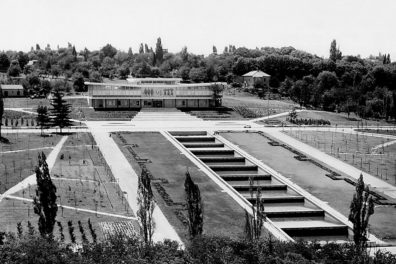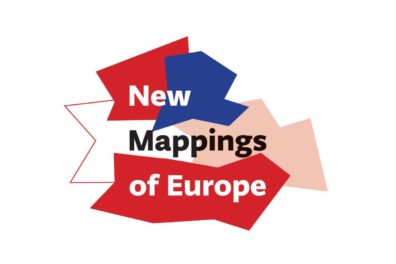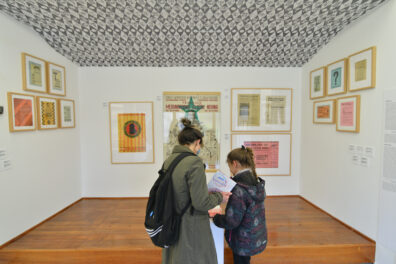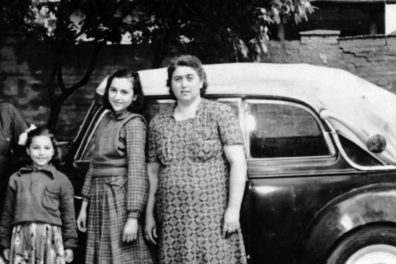Interventions at the exhibition “TANJUG is Reporting – the War is Over”
Part of the exhibition: TANJUG IS REPORTING – THE WAR IS OVER
The team of authors that realized the exhibition of documentary photographs TANJUG Is Reporting, The War Is Over, opened in July in the Museum of Yugoslavia, continues to research this material of exceptional historical significance. The various researchers’ interpretations, which will be presented, from August 20, by videos within the exhibition, shed light on some of the key events and phenomena from the period from October 1944 to November 1945, recorded in the exhibited photographs of TANJUG’s reporters.
After this material was originally presented in an integral form, curators Radovan Cukić and Milica Tomić decided to give voice to historians, art historians and photography theorists who had had the opportunity to research it in the previous period. They offer possible interpretations of these photographs, which will enable the audience to dive deeper into selected case studies, but also to realize all the ways of analyzing photographic material as an irreplaceable visual testimony of a bygone era.
The video materials, which will also be available from the same date on the Museum’s YouTube channel, feature art historian Milanka Todić, historian Bojan Dimitrijević, historian Nataša Mataušić and visual artist Davor Konjikušić. Some of the topics that are discussed are gender equality in Yugoslavia, military history of the period, the rescuing of children carried out by Diana Budisavljević, and the early work of the TANJUG editorial office.
Prof. Milanka Todić, art historian, full professor at the Faculty of Applied Arts in Belgrade, whose research field includes history and theory of photography, as well as avant-garde art, analyzes in detail Koča Popović’s photography from a large rally dedicated to women’s emancipation. In her commentary, Professor Todić gives a broader context, emphasizing the position of women in the new Yugoslavia and the equality gained during the Second World War.
Historian Bojan Dimitrijević deals with military history, emphasizing the situation on the streets of Belgrade and Zagreb, as well as the atmosphere and military equipment of partisan, German and Croatian armed forces found on the streets of these cities in the first days after the liberation.
Nataša Mataušić, historian and curator of the Collection of Photographs, Films and Negatives of the Croatian History Museum, analyzes the content of photographs of Kozara children moved from Ustasha concentration camps near Jasenovac to Sisak thanks to Diana Budisavljević, pointing out the importance of that photo material as a confirmation of Diana Budisavljević’s efforts to take over the children from the camp and to identify them, but at the same time as a testimony about the condition of those children.
Davor Konjikušić, visual artist, analyzes the portraits of TANJUG workers, dealing with the specifics of partisan photography and its propaganda role, and also looking at the position of ordinary workers in creating a new Yugoslav society. Konjikušić draws attention to photography itself as a medium, that is, to the role and significance of archival photography.
The material presented at the exhibition has only recently been identified as a whole within the rich photographic material of the Museum of Yugoslavia, and in parallel with the interventions at the exhibition, documentation is being prepared, which will protect the entire collection as a cultural asset. This is also the first step by which the Museum opens to the public the oldest preserved part of the photo archive of the Telegraph Agency of New Yugoslavia.
The exhibition will be open until September 30, 2020, and is realized with the support of the Ministry of Culture and Information of the Republic of Serbia. The Museum of Yugoslavia thanks TANJUG JP for granting the right to use part of the business name for the exhibition needs.
- Day: 20.08-30.09.2020

The Origins: The Background for Understanding the Museum of Yugoslavia
Creation of a European type of museum was affected by a number of practices and concepts of collecting, storing and usage of items.

New Mappings of Europe

Museum Laboratory
Starting from the Museum collection as the main source for researching social phenomena and historical moments important for understanding the experience of life in Yugoslavia, the exhibition examines the Yugoslav heritage and the institution of the Museum

